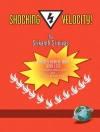Providing a psychological perspective on the use and abuse of alcohol and other psychoactive drugs, this Second Edition includes more coverage of the theories of alcohol and other drug use and abuse, as well as broad conceptual issues related to the nature of addiction and recent developments in research methods.
Key Features
- Focuses on alcohol, which is used more widely than any other drug, and the one that is associated with the most societal harm
- Evaluates important studies on major issues, concepts, and theories rather than providing exhaustive literature reviews
- Teaches students to become educated consumers of research findings, rather than passive or uncritical recipients
Ancillaries
- A Student Study Site with chapter summaries, multiple-choice quizzes, flashcards for glossary items, an annotated list of relevant Web sites, informational Quick Time movies, and SAGE journal articles.
- A password protected Instructor′s Resource Site includes Power Point slides and test questions.
Intended Audience
This text is appropriate for upper-level undergraduate courses in Drugs and Behavior, Psychology of Addiction, and Drug Abuse Counseling. It can also be used in graduate-levelcourses in Drugs and Behavior and Addiction courses taught in health science, social work, criminal justice, and nursing.
Daftar Isi
Preface
Acknowledgments
1. Psychology of Alcohol and Other Drugs
Focus and Goals of This Book
History of Drugs in America
Origins of Licit Drugs
Origins of Illicit Drugs
Some Central Questions
Summary
Stimulus/Response
2. Theories of Alcohol and Other Drug Use
A ‘Layperson’ Theory
Psychological Theories
Mediators, Moderators, and Direct Causes
Theories of Smoking
Theory of Caffeine Use
Illicit Drug Theory
Summary
Stimulus/Response
3. Alcohol and Other Drugs: Use, Abuse, and Dependence
Defining Use
Methods Of Measuring Use
Use, Abuse, and Dependence
Major Conceptions of Alcohol Use Disorders
Criteria of Abuse and Dependence
Assessment of DSM-IV Disorders
Summary
Stimulus/Response
4. The Extent of Alcohol and Other Drug Use
The Epidemiological Approach
National Surveys of Alcohol and Other Drug Use
Stability of Alcohol Use Patterns
Abuse and Dependency Rates
Comorbidity of Alcohol and Illicit Drugs
Other Sources of Data
The Ethnographic Approach
Summary
Stimulus/Response
5. Neurobiology of Alcohol and Other Drug Use
What Happens After Drugs Are Taken?
How Drugs Affect the Nervous System
How Neurons Communicate
How Alcohol and Other Drugs Affect Neurotransmission
Changes in Neurophysiology With Prolonged Drug Use
Neuroadaptational Models
Physical Effects of Drugs
A Safe Level of Alcohol Use?
Summary
Stimulus/Response
6. Heredity and Environment: Alcohol and Other Drug Use
Molecular Genetics
Indirect Evidence of Hereditary Influences on Alcoholism
Direct Evidence of Hereditary Influences on Alcoholism
Family Environment Influences
Integrative Models of Heredity and Environment
Summary
Stimulus/Response
7. Basic Psychological Processes
Methodological Issues
Mood and Emotion
Emotional Regulation and Drinking
Sensory Motor Activity
Cognition
Structural Neuropsychological Explanations
Process Neuropsychological Explanations
Summary
Stimulus/Response
8. Interpersonal Processes
Aggression
Moderators of the Alcohol-Aggression Relationship
A Moderator Variable Model
Sexual Activity
Summary
Stimulus/Response
9. Family Processes
Alcohol and Marital Status
Effects of Parental Alcohol Use Disorders on Children
Alcoholic Family Interactions
Adult Children of Alcoholics
Codependency
Summary
Stimulus/Response
10. Age and Alcohol and Other Drugs
Adolescents
College Students
Young Adults
Older Populations
Age, Cohort, and Period Effects
Summary
Stimulus/Response
11. Gender Differences In Alcohol and Other Drug Use
Methodological and Conceptual Issues
Gender and Prevalence of Alcohol Use
Gender Correlates of Alcohol and Other Drug Use
Gender and Alcoholism Treatment
Theories of Gender Differences in Alcohol and Other Drug Use
Smoking and Gender
Gender and Other Drug Use
Summary
Stimulus/Response
12. Minority Groups: Alcohol and Other Drug Use
Racial/Ethnic Minority Groups and Alcohol
Racial/Ethnic Minority Groups and Smoking
Racial/Ethnic Minority Groups and Illicit Drugs
Influence of Acculturation on Alcohol and Other Drug Use
Sexual Minority Groups and Alcohol
Summary
Stimulus/Response
13. Recovering From Alcohol and Other Drug Dependencies
Motivating Change
Methods of Recovery
Alcoholics Anonymous and Related Mutual Help Groups
Behavioral Model
Self-Help Treatment for the Family of Alcoholics
Natural Recovery
Stimulus/Response
14. Treatment of Alcohol and Other Drug Dependencies
Typical 28-Day Inpatient Treatment
Size of the Treatment Population
Reasons for Not Seeking Treatment
Psychotherapy
Behavioral Approaches
Family Therapy
Brief Intervention Therapy
Early Detection and Screening
Pharmacological Approaches
Combining Behavioral and Pharmacological Treatment
Evaluation of Treatment Programs
Determining How Effective Therapies Work
Matching Patients and Treatments
Alcoholics With Dual Diagnoses
Other Drugs: Treatment of Abuse and Dependency
Smoking Treatments
Summary
Stimulus/Response
15. Relapse After Treatment of Alcohol and Other Drug Disorders
Defining Relapse
Craving and Relapse
A Dynamic Model of Relapse
Successful Lapse Resistance
Summary
Stimulus/Response
16. Prevention of Alcohol and Other Drug Problems
Social Policy and Drugs
The Public Health Model
Primary Prevention
Secondary Prevention
Harm Reduction Approach
Promoting Social Change
A Tale of Two Drugs
The Future of Prevention
Summary
Stimulus/Response
Glossary
References
Index
About the Author












